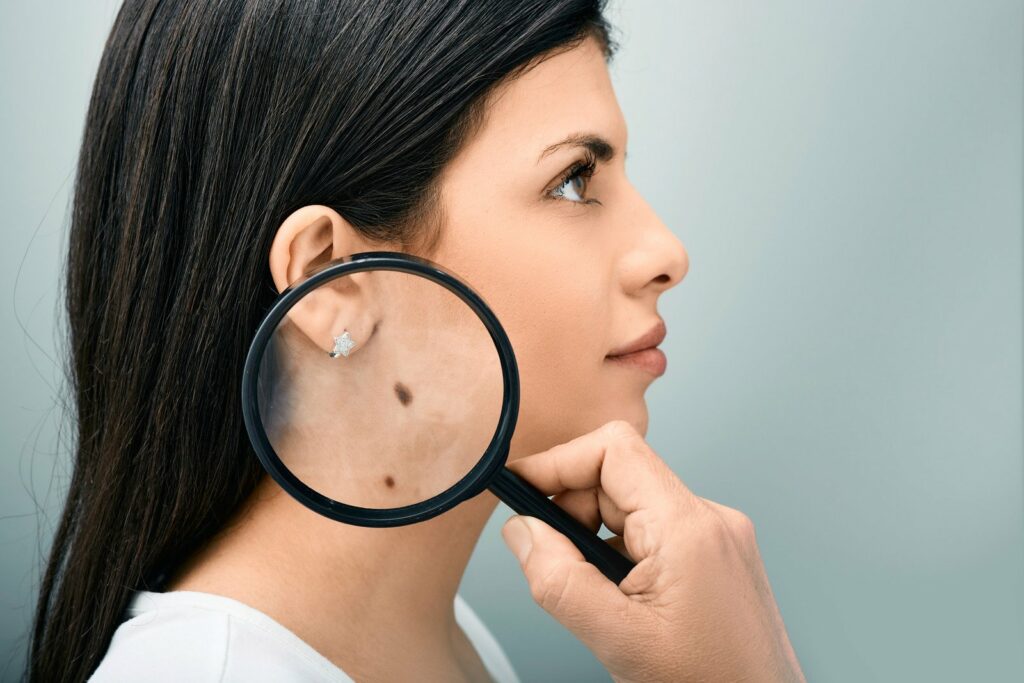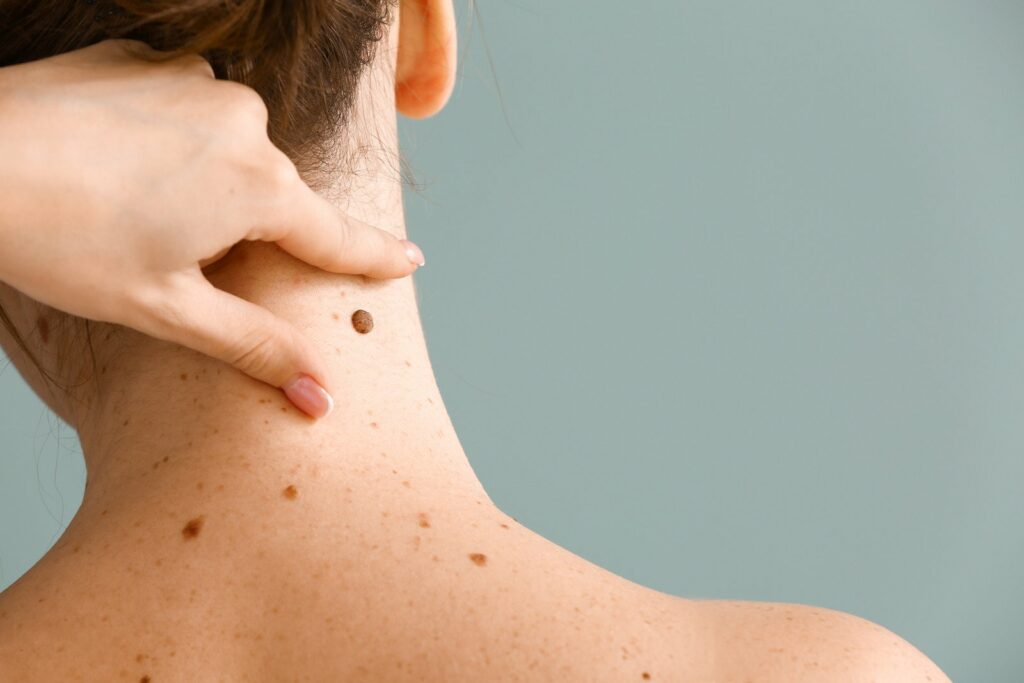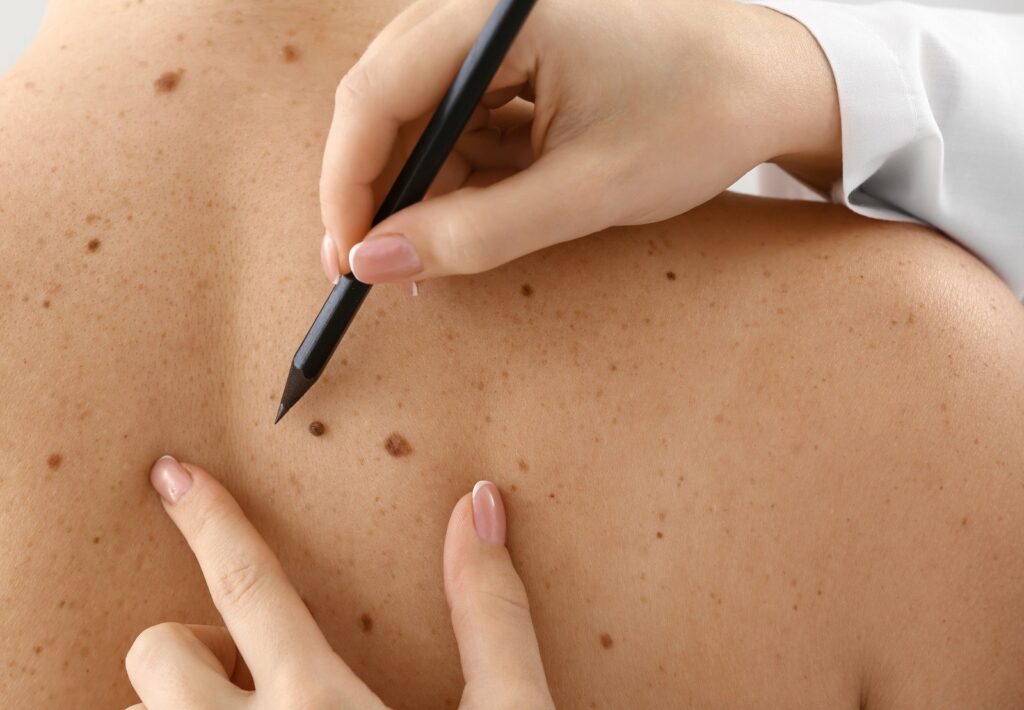Monitoring Your Moles for Skin Health
Keeping an eye on your moles is more than just a cosmetic concern; it’s a crucial aspect of maintaining your skin’s health. Moles, those little spots that appear on your skin, are often harmless, but changes in size, shape, or color could indicate something more serious, like skin cancer. Moles, are a prevalent skin phenomenon often associated with sun exposure. While their appearance is generally benign, excessive ultraviolet radiation, notably from sunburns or tanning booths, can exacerbate their occurrence and become skin moles to worry about.
It’s imperative to recognize that beyond cosmetic concerns, moles serve as potential indicators of broader skin health. This awareness underscores the importance of regular self-assessment to identify any irregularities or changes that may signal underlying health risks, including the development of malignant melanoma. In this comprehensive guide, we explore the significance of mole monitoring and provide a structured approach for at-home assessment.
Why Mole Monitoring Matters
Moles, medically known as melanocytic nevi, can serve as early warning signs for potential health issues. While most moles are harmless or benign, changes in their appearance may indicate melanoma, a form of skin cancer. By keeping a close watch on your moles, you can detect any abnormalities early on and seek timely medical attention, significantly improving treatment outcomes. If you have a family history of melanoma skin cancer or other cancers you should be especially vigilant as you may be more susceptible to developing melanoma.

What to Look for When Checking Your Moles
Assessing your moles doesn’t require any special equipment—just your eyes and a bit of attention to detail. You may have noticed a new mole that recently appeared, or are examining an existing mole.
Here are some key characteristics to watch out for:
Asymmetry: Healthy moles are usually symmetrical, meaning one half mirrors the other. Asymmetrical, atypical moles, or uneven shapes where one half looks different from the other, could be a cause for concern.
Border: Pay attention to the borders of your moles. Well-defined borders are typical of benign moles, while irregular, blurred, or jagged borders may indicate potential malignancy.
Color: Normal moles typically have a uniform color. Watch out for moles with uneven coloring, such as shades of black, blue, white, or red, which may suggest underlying issues.
Diameter: While moles come in various sizes, those larger than the eraser on a pencil may warrant closer inspection.
Evolution: Changes in size, shape, or color over time could signal a problem. Keep track of any changes and consult a dermatologist if you notice anything unusual.
Practical Tips for Mole Monitoring
Incorporating mole checks into your routine doesn’t have to be complicated. Here are some simple tips to help you stay on top of your skin health:
Set a Schedule: Make mole checks a regular part of your skincare routine, aiming to do them every few months.
Use a Mirror: If you’re checking hard-to-reach areas like your back, enlist the help of a mirror or a trusted friend or family member.
Take Notes: Keep a record of your mole observations, including any changes you notice. This documentation can be valuable during consultations with healthcare professionals like those at High Valley Dermatology.


Seeking Professional Advice
If you have any concerns about your moles, notice any changes, or develop suspicious moles that worry you, don’t hesitate to seek professional advice. Dermatologists, like those at High Valley Dermatology, are trained to assess moles and can provide guidance on next steps, including mole removal if necessary.
Conclusion
Regularly monitoring your moles is a proactive step in maintaining your skin health. By staying vigilant and knowing what to look for, you can detect potential issues like melanoma skin cancer early and take appropriate action. Remember, your skin is your body’s largest organ—take care of it, and it will take care of you.





